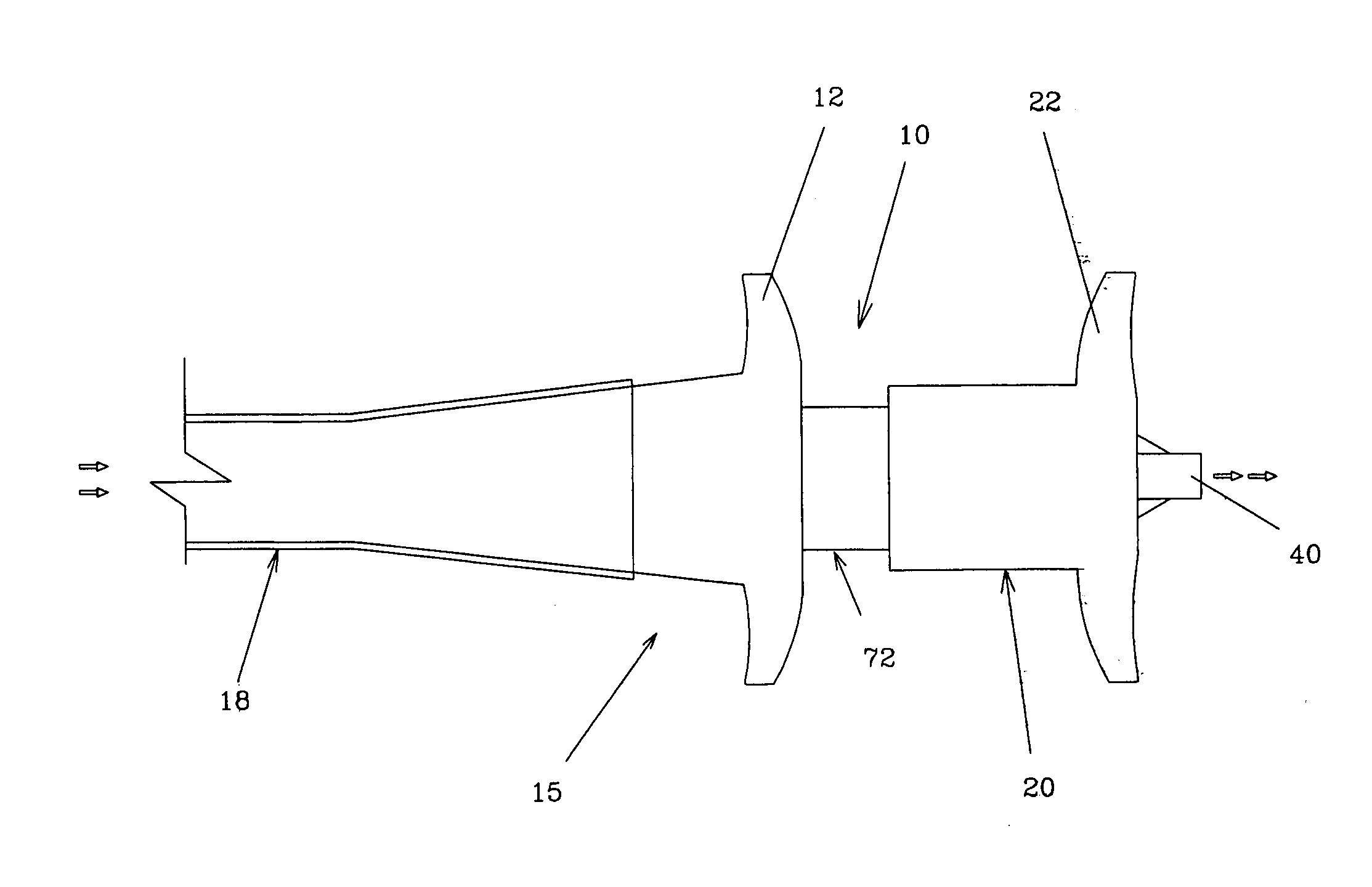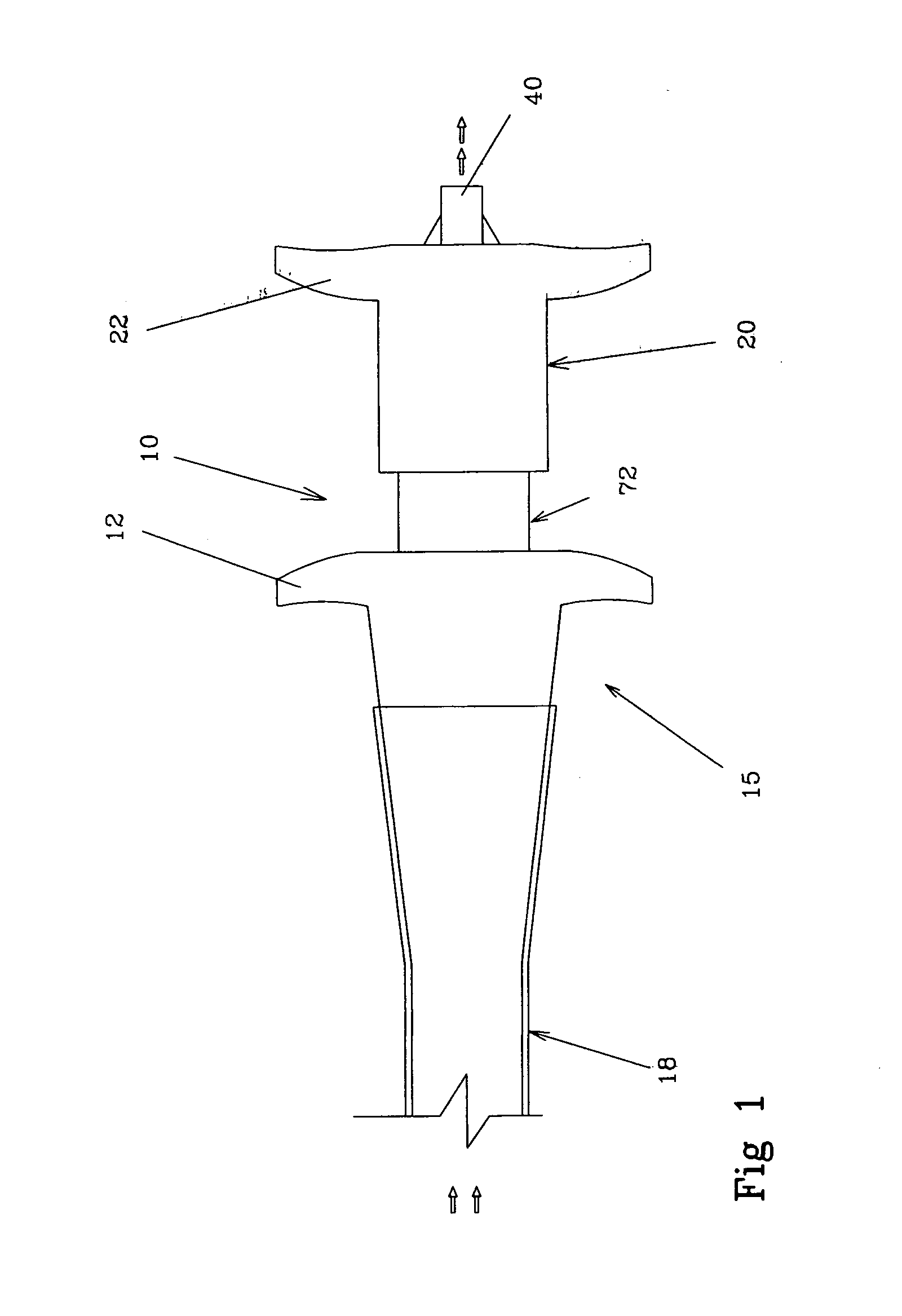External control valve for indwelling urethral catheters
- Summary
- Abstract
- Description
- Claims
- Application Information
AI Technical Summary
Benefits of technology
Problems solved by technology
Method used
Image
Examples
Embodiment Construction
[0022]FIG. 1 depicts the preferred embodiment of the external urethral valve (10). The external urethral valve (10) includes a hollow adapter section (15), a distal end of which is sized and configured to frictionally engage within a proximal end of a standard indwelling urethral catheter (18) as illustrated. The valve (10) also includes a moveable cap (20) integrating a valve stem (40) therein which terminates in a valve head (48) positioned within the hollow adapter section (15), the valve stem (40) extending into and through the body of the adapter section (15) through a proximal bore (80) therein. When the cap (20) is squeezed or moved against a flange (12) of the hollow adapter section (15) using a flange (22) on the cap (20) whenever the user wants to open the valve (10) in order to empty the bladder. Once the cap (20) is moved toward the hollow adapter section (15) along a hollow neck portion (72) through which a hollow valve stem (40) extends, and around which is seated a bi...
PUM
 Login to View More
Login to View More Abstract
Description
Claims
Application Information
 Login to View More
Login to View More - R&D
- Intellectual Property
- Life Sciences
- Materials
- Tech Scout
- Unparalleled Data Quality
- Higher Quality Content
- 60% Fewer Hallucinations
Browse by: Latest US Patents, China's latest patents, Technical Efficacy Thesaurus, Application Domain, Technology Topic, Popular Technical Reports.
© 2025 PatSnap. All rights reserved.Legal|Privacy policy|Modern Slavery Act Transparency Statement|Sitemap|About US| Contact US: help@patsnap.com



